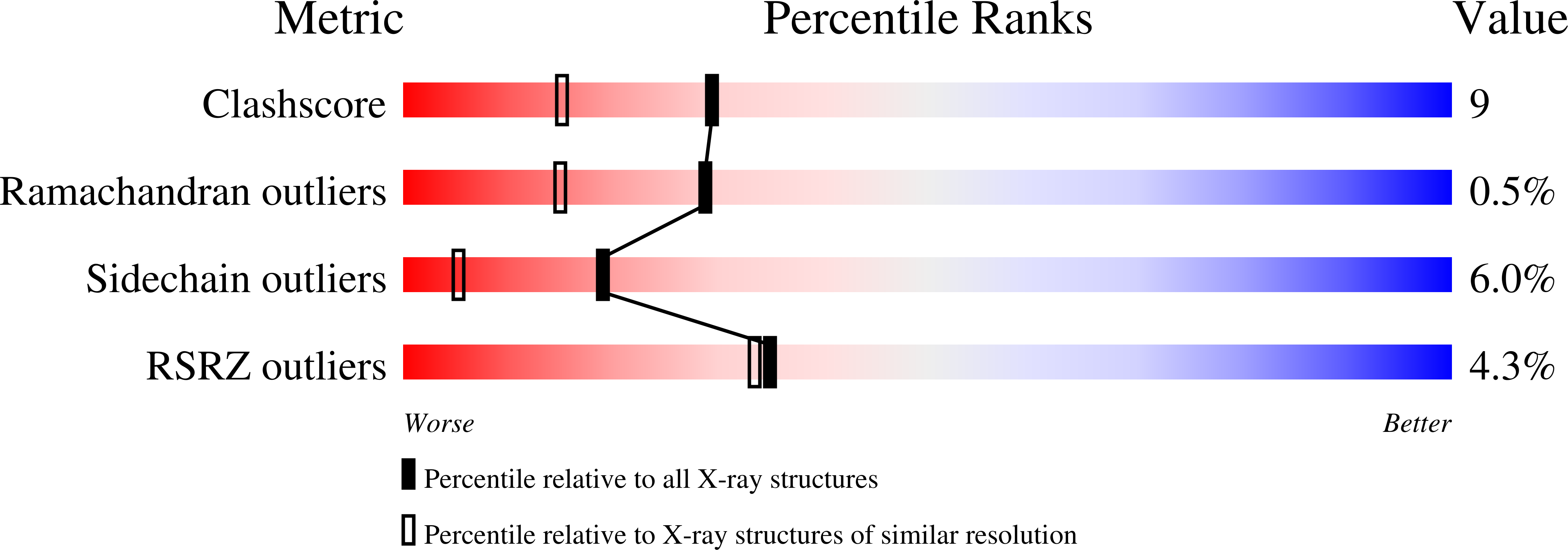Crystal structures of brain group-VIII phospholipase A2 in nonaged complexes with the organophosphorus nerve agents soman and sarin.
Epstein, T.M., Samanta, U., Kirby, S.D., Cerasoli, D.M., Bahnson, B.J.(2009) Biochemistry 48: 3425-3435
- PubMed: 19271773
- DOI: https://doi.org/10.1021/bi8023527
- Primary Citation of Related Structures:
3DT6, 3DT8, 3DT9 - PubMed Abstract:
Insecticide and nerve agent organophosphorus (OP) compounds are potent inhibitors of the serine hydrolase superfamily of enzymes. Nerve agents, such as sarin, soman, tabun, and VX exert their toxicity by inhibiting human acetycholinesterase at nerve synapses. Following the initial phosphonylation of the active site serine, the enzyme may reactivate spontaneously or through reaction with an appropriate nucleophilic oxime. Alternatively, the enzyme-nerve agent complex can undergo a secondary process, called "aging", which dealkylates the nerve agent adduct and results in a product that is highly resistant to reactivation by any known means. Here we report the structures of paraoxon, soman, and sarin complexes of group-VIII phospholipase A2 from bovine brain. In each case, the crystal structures indicate a nonaged adduct; a stereoselective preference for binding of the P(S)C(S) isomer of soman and the P(S) isomer of sarin was also noted. The stability of the nonaged complexes was corroborated by trypsin digest and electrospray ionization mass spectrometry, which indicates nonaged complexes are formed with diisopropylfluorophosphate, soman, and sarin. The P(S) stereoselectivity for reaction with sarin was confirmed by reaction of racemic sarin, followed by gas chromatography/mass spectrometry using a chiral column to separate and quantitate each stereoisomer. The P(S) stereoisomers of soman and sarin are known to be the more toxic stereoisomers, as they react preferentially to inhibit human acetylcholinesterase. The results obtained for nonaged complexes of group-VIII phospholipase A2 are compared to those obtained for other serine hydrolases and discussed to partly explain determinants of OP aging. Furthermore, structural insights can now be exploited to engineer variant versions of this enzyme with enhanced nerve agent binding and hydrolysis functions.
Organizational Affiliation:
Department of Chemistry & Biochemistry, University of Delaware, Newark, Delaware 19716, USA.















